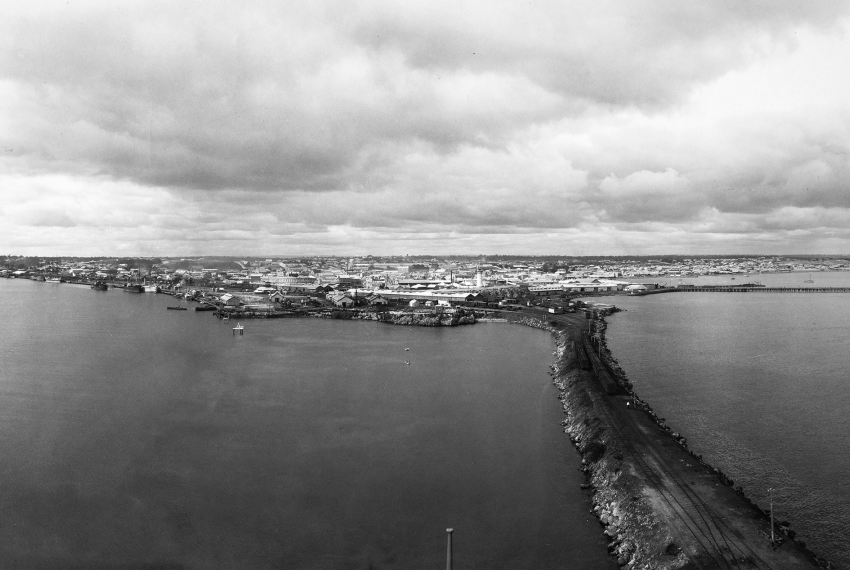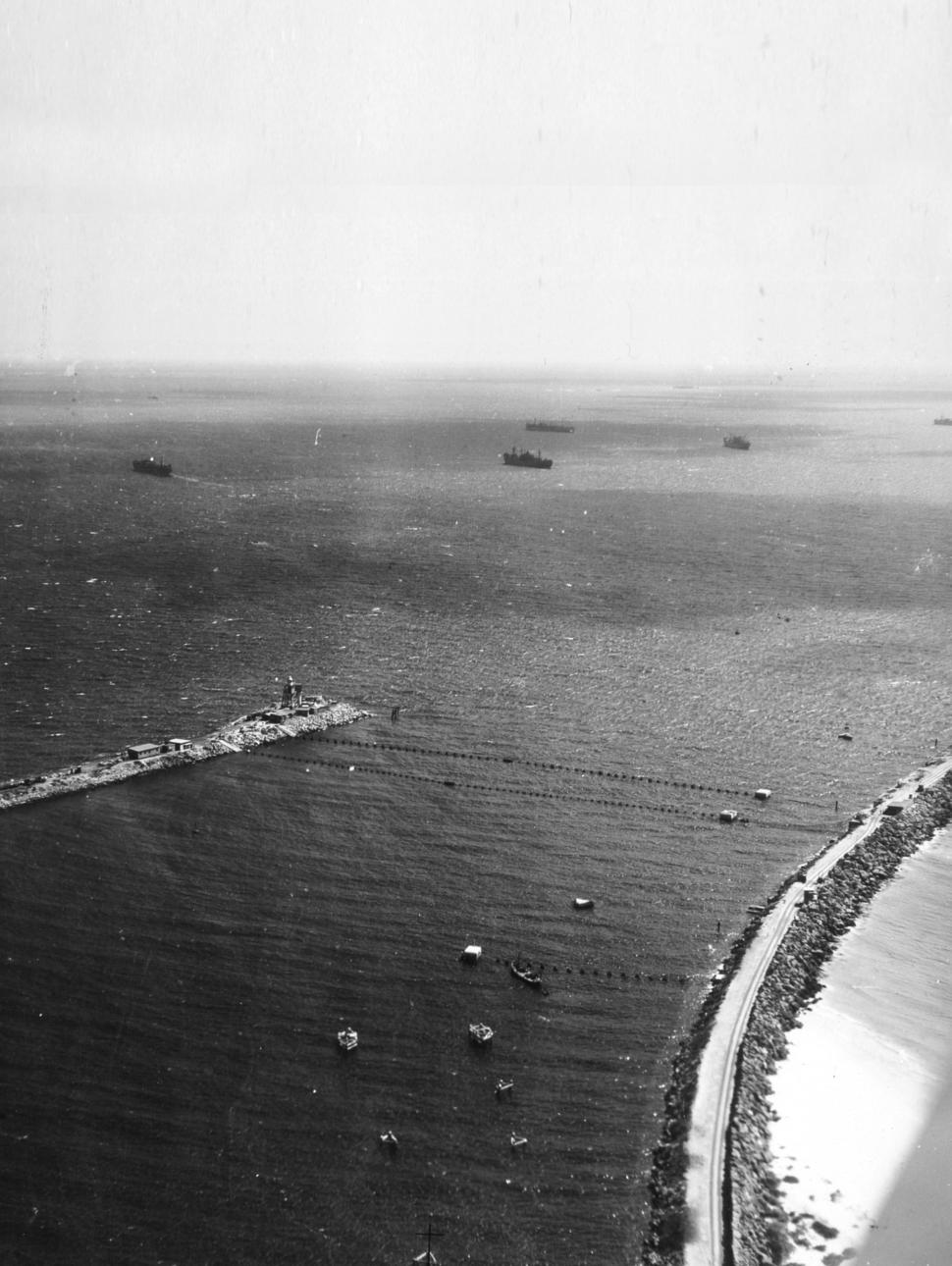
Sunday Seminars: Fremantle Then & Now
Dates
Sunday 9 October 2022 | 2pm – 3pm
Saturday 29 October 2022 | 2pm – 3pm
Sunday 13 November 2022 | 2pm – 3pm
Sunday 22 January 2023 | 2pm – 3pm
Free with Museum entry | Bookings are required
Site access information
WA Maritime Museum is mostly accessible, excluding tours aboard the HMAS Ovens. Call 1300 134 081 for assistance. More about accessibility and amenities >
Join us for a program of Sunday Seminars that feature some of the big stories revealed by the Fremantle Then & Now exhibition.
Have you considered what Walyalup means to the Nyoongar peoples who first enjoyed this beautiful site where the Derbarl Yerrigan (Swan River) meets the coast? Did you know that Fremantle was the secret heart of the Allied submarine fleet securing the Indian Ocean during WWII? What is the story behind the panorama of Fremantle that flamboyant American photographer and adventurer Melvin Vaniman secured in 1904?
Sunday 22 January | 2pm
Dr Michelle McKeough – A Town in Crisis: Fremantle 1900 to 1930
Join Michelle McKeough to explore the world of Fremantle from 1900 through the next thirty years as the town struggled through a series of crises and challenges that called on the community for well-organized responses.
In April 1900, a Fremantle railway worker named William Campbell fell ill, and within four days became the first person in Western Australia to die of bubonic plague. This brought focus onto Fremantle’s inadequate and frequently disgusting sanitary conditions at the time. Long known for noxious smells, bad drains and poor sewerage management, overcrowding and tenements, Fremantle’s streets were now subject to a campaign of sanitation improvement that helped move Fremantle forward towards dramatically better public health conditions.
The next decade brought the challenge of mobilization for World War I, where three thousand from the Fremantle community departed for active duty. The challenge of re-settling returned soldiers in the following period saw new employment initiatives created for injured veterans, with these ‘wingies and stumpies’ becoming street-barrow vendors. Other support for repatriation activities, and for widows and orphans demonstrated a number of ways that the people of Fremantle rallied together as a community to support those in need of assistance and employment.
This resilience prepared the community for the next set of challenges to face the lumpers and labour community with the advent of the Depression era. By 1930 there were almost 250 destitute single men living on the streets around Fremantle, with an equal number of unemployed married men struggling to provide for families. A busy civil movement of food and welfare relief activity emerged from the Fremantle community through donations, soup kitchens and free services such as haircuts and dental treatment.
Explore Michelle’s research into the fascinating story of how the town community of Fremantle has evolved, defined by centrality of the port. Her work reveals a story of strong community identity forged through civic engagement with the social challenges of the early twentieth century.
ABOUT YOUR SPEAKERS
Dr Michelle McKeough
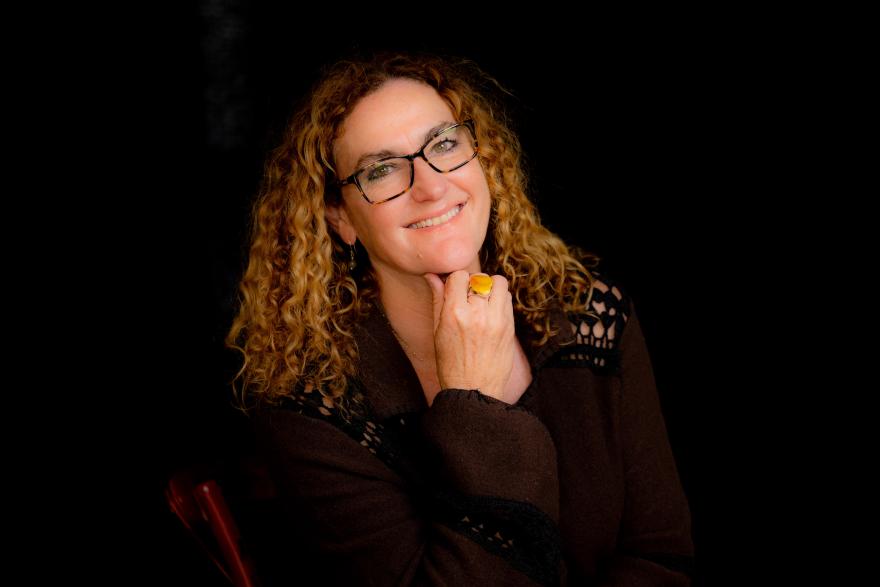
Dr Michelle McKeough is a historian working in Western Australian history. Michelle’s doctoral thesis (Murdoch University, 2016) examined three times of crisis in Fremantle during the twentieth century: the bubonic plague, the Great War and the Depression era. Michelle is a contributing author to numerous academic publications, author of Rescues, Rogues and Rough Seas 150 years of Water Police in Western Australia. (Fremantle: W.A Water Police, 2000) and of This fearful Plage: Bubonic Plague in Western Australia 1900-1906.
PAST SEMINARS
Sunday 9 October | 2pm
John Dowson – Vaniman’s 1904 Panorama - Before he fell out of his balloon.
Join John Dowson for a step back in time to Fremantle at the turn of the century. John will draw on his expertise on the photographic history of Fremantle to elaborate on the panorama captured in 1904 by the flamboyant American photographer and adventurer Melvin Vaniman.
Dive into more history about removal the limestone bar across the river mouth during harbour development; how the early bridges saved the river from port expansion; on the location of CY O'Connor's office facing out to sea from where he planned the harbour works; the visual story of the Long Jetty; some of the great ships that visited around the time of the photograph and more.
John Dowson
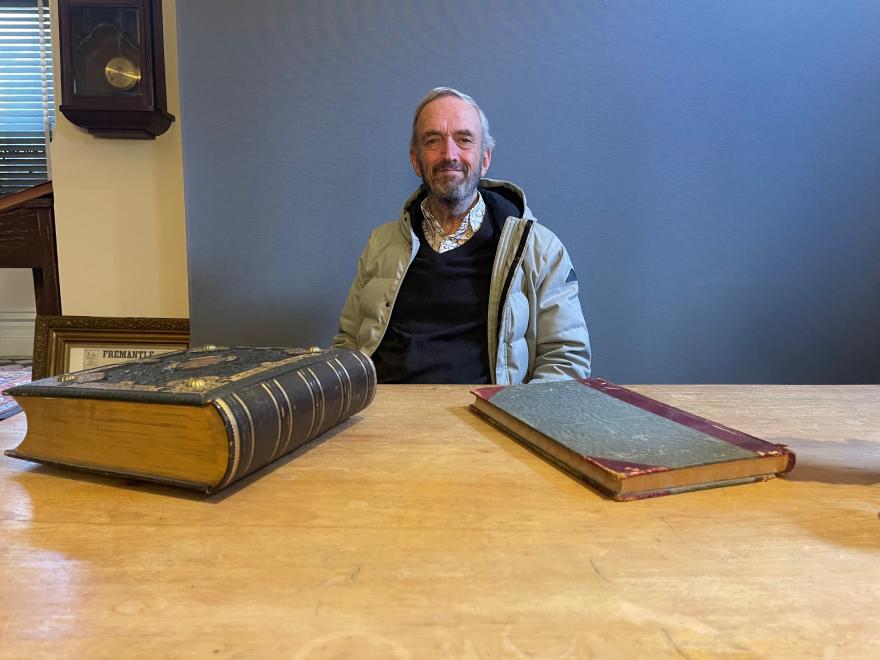
John Dowson has written four books on Fremantle, including the award-winning Old Fremantle and Fremantle Port, both publications that are rich with images of the texture and history of the town and port. He is currently President of the Fremantle Society and lives 50 metres from the port in an old shipping company headquarters.
Saturday 29 October | 2pm
Neville Collard – Walyalup Walk & Talk: Sharing Culture*
*This is a walking tour so please wear appropriate attire and bring a drink bottle
Join esteemed Nyungar Elder Neville Collard for a free walk-and-talk tour celebrating Walyalup Fremantle. After welcoming you to Whadjuk Nyoongar boodja, Neville will take you on a journey through the local heritage and stories associated with Fremantle, and share some of the stories that define Walyalup's origins and significance for traditional owners. Perched on the waters of the Derbarl Yerrigan (where the Swan River meets the sea), Walyalup has been a place for gathering, trading and fishing since the earliest times.
Neville will share insights into the rich local knowledge and traditions of Whadjuk Nyoongar people in the Walyalup area.
Neville Collard
Uncle Neville Collard is a highly respected and locally well-known Nyungar Elder. Besides his family links throughout Whadjuk country, Neville has strong Ballardong connections. As a story custodian and Nyungar community leader, he works in partnership with Rottnest Islands Board on cultural matters and Whadjuk burial sites redevelopment; he was previously responsible for developing Noongar Outreach Service (Nyoongar Patrol). In 1991 he was the recipient of a world scholarship to travel to the USA, New Zealand and UK to study with specialist law agencies including the FBI and Scotland Yard. Appointed a Justice of the Peace in 2022, he regularly consults to State government, local government and private business on Nyoongar Cultural and Heritage issues.
Sunday 13 November | 2pm
Tim Baldock – Secret Fremantle: Submarines in the Indian Ocean and beyond
Join Tim Baldock for an exploration of Fremantle’s covert role as the world's second largest submarine base in World War II, offering sanctuary to submarines from the United States, England and The Netherlands. In total, more than 170 submarines were based in Fremantle over the course of the war.
The contribution of this submarine fleet to the eventual Allied victory was immense, with some of the United States' most successful ships based there. Such was the importance of this base, that the Port was closed to the public and most people who lived in Fremantle had no idea of the significance of their contribution to the war effort.
To protect the Port, an array of coastal defences existed which stretched from Swanbourne in the north, to Point Peron in the south, and out to Rottnest Island off the coast. New developments in airpower - supported by the advent of the aircraft carrier - changed the nature of naval battle during World War II, with the world’s greatest battleships and submarines challenged increasingly by the airpower threat from the skies. Western Australians sense of vulnerability was influenced by the fall of Singapore to Australia's north, the bombing of Darwin and insights into Japanese military plans for invasion and occupation within Australia.
Tim will discuss life in Fortress Fremantle during the war, and how the submarine base affected civilian life, including the tensions that existed between Australian and American servicemen.
Tim Baldock
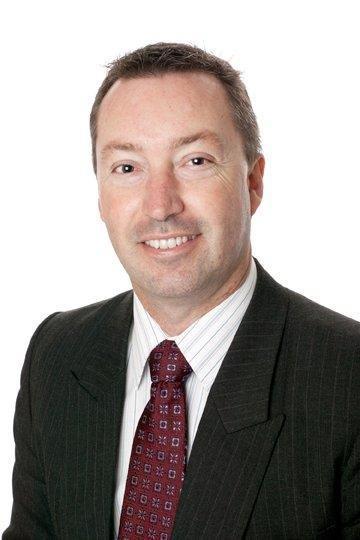
Tim Baldock is an avid military historian and author of Fortress Fremantle: Its Lost Sub & Contribution to World War II. Tim’s research interest in the Pacific War was influenced through his work as a volunteer tour guide on Rottnest Island in Western Australia where the Oliver Hill Gun Battery still stands today. A proud West Australian, who grew up with a deep connection to Fremantle, this book on Fremantle’s significance as a covert submarine base for many Allied countries during WWII has allowed him to share his passion for history with his love of the Port.
Related exhibitions
Explore Fremantle through sweeping panoramas taken from the 1800s to the modern day.
